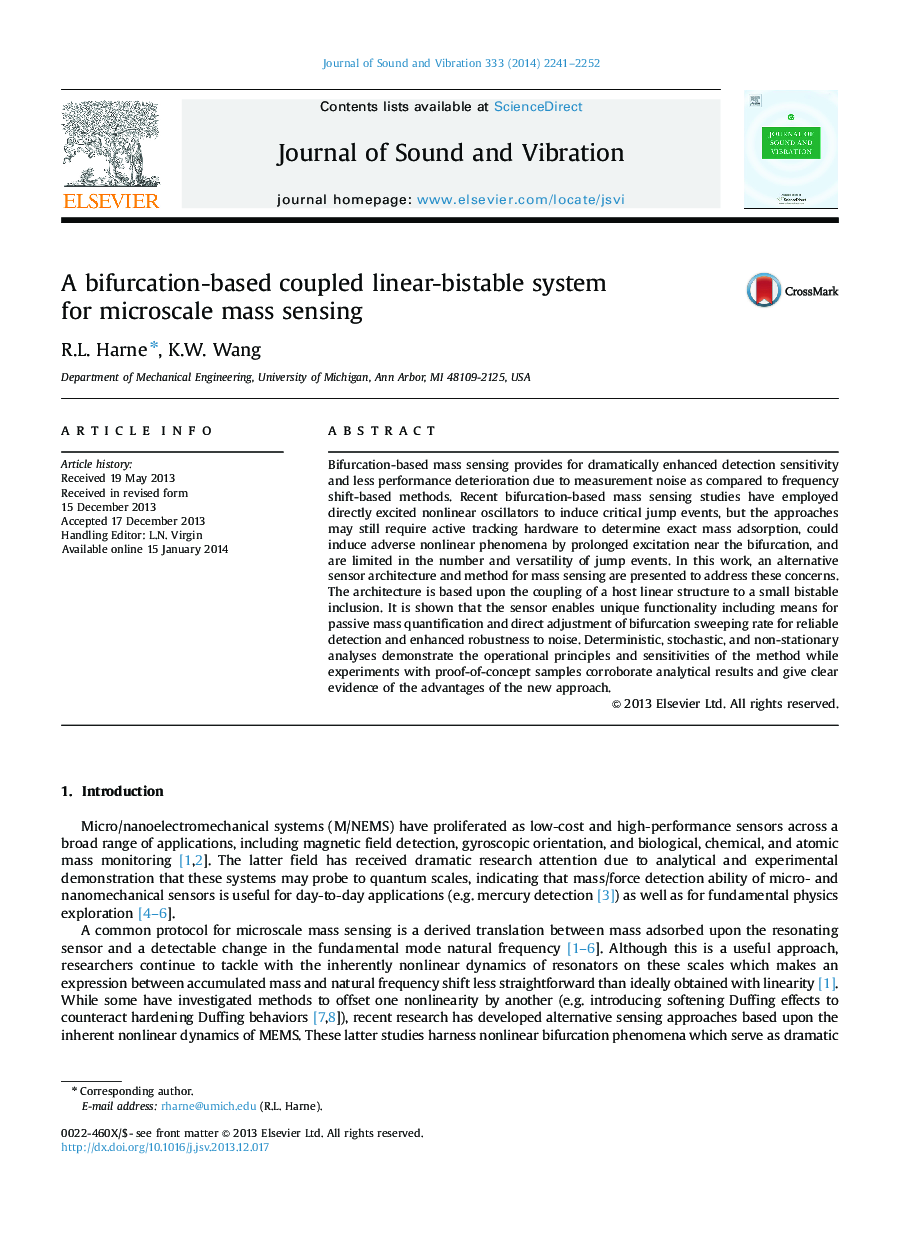| کد مقاله | کد نشریه | سال انتشار | مقاله انگلیسی | نسخه تمام متن |
|---|---|---|---|---|
| 287743 | 509583 | 2014 | 12 صفحه PDF | دانلود رایگان |
Bifurcation-based mass sensing provides for dramatically enhanced detection sensitivity and less performance deterioration due to measurement noise as compared to frequency shift-based methods. Recent bifurcation-based mass sensing studies have employed directly excited nonlinear oscillators to induce critical jump events, but the approaches may still require active tracking hardware to determine exact mass adsorption, could induce adverse nonlinear phenomena by prolonged excitation near the bifurcation, and are limited in the number and versatility of jump events. In this work, an alternative sensor architecture and method for mass sensing are presented to address these concerns. The architecture is based upon the coupling of a host linear structure to a small bistable inclusion. It is shown that the sensor enables unique functionality including means for passive mass quantification and direct adjustment of bifurcation sweeping rate for reliable detection and enhanced robustness to noise. Deterministic, stochastic, and non-stationary analyses demonstrate the operational principles and sensitivities of the method while experiments with proof-of-concept samples corroborate analytical results and give clear evidence of the advantages of the new approach.
Journal: Journal of Sound and Vibration - Volume 333, Issue 8, 14 April 2014, Pages 2241–2252
